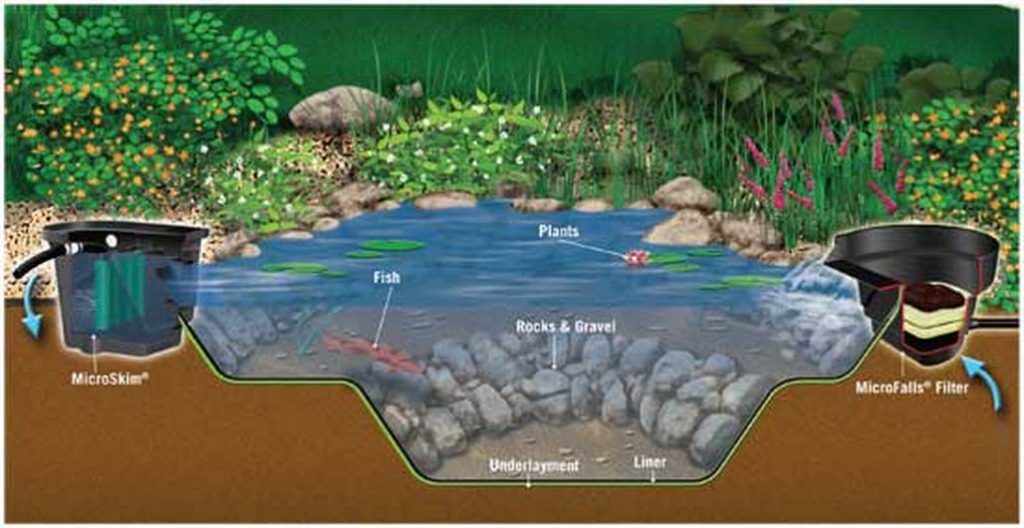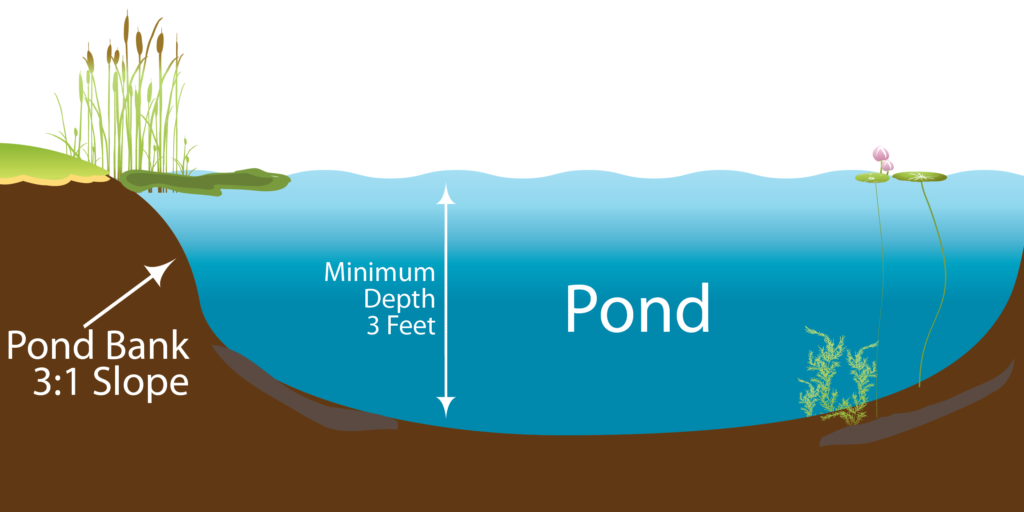When we think of a pond, we often picture a serene body of water nestled among trees, bustling with life. But have you ever wondered how deep a pond can be? Let’s delve into the fascinating world of pond depths and discover the secrets hidden beneath the surface.
Understanding Pond Depths
How deep should a pond be? Well, ponds come in various shapes and sizes, and their depths can vary significantly. A typical pond may have a depth ranging from a few feet to several meters. The depth of a pond is influenced by several factors, including its location, geological features, and human intervention.
Natural Factors Influencing Pond Depth
Geological formations play a crucial role in determining the depth of a pond. Ponds situated in areas with rocky terrain may have deeper basins due to the natural topography. Additionally, ponds fed by underground springs or streams may have greater depths, as the continuous flow of water contributes to the excavation and maintenance of deeper areas.
Human-created Ponds
Humans have been creating ponds for various purposes for centuries. Agricultural ponds, ornamental ponds, and aquaculture ponds are just a few examples of human-made water bodies. The depth of these ponds is often intentionally designed to serve specific functions, such as providing water for irrigation, enhancing landscaping, or supporting aquatic life.

Credit: atlantiswatergardens.com
The Role of Depth in Pond Ecosystems
The depth of a pond plays a vital role in shaping its ecosystem. Different depths create diverse habitats for aquatic organisms, influencing the distribution of flora and fauna within the pond. Shallow areas near the shorelines are often rich in aquatic plants and provide spawning grounds for various fish species, while deeper sections offer refuge for larger fish and other aquatic creatures.
Depending on the ecosystems the depth of a pond can be changed. So, if you want to know how deep should a fish pond be then follow this article.
Impact On Water Quality
The depth of a pond can significantly impact its water quality. Deeper ponds may experience less fluctuation in water temperature, promoting stability within the ecosystem. Furthermore, deeper ponds are less susceptible to algal blooms, as sunlight penetration is reduced at greater depths, limiting the growth of algae that rely on photosynthesis.

Credit: coolponds.blogspot.com
Measuring Pond Depth
There are various methods to measure the depth of a pond, ranging from simple techniques to advanced technologies. One common approach is to use a weighted line or a measuring tape to determine the depth manually. More sophisticated methods involve the use of sonar technology to create detailed depth maps of pond bottoms.
Benefits Of Knowing Pond Depth
Understanding the depth of a pond is essential for several reasons. It aids in the planning and design of aquatic habitats, helps in determining suitable stocking densities for fish, and enables the implementation of effective pond management practices. Additionally, knowing the depth of a pond is crucial for assessing its water storage capacity, which is particularly important for agricultural and recreational purposes.
Exploring the Deepest Ponds in the World
While many ponds are relatively shallow, there are exceptional cases where ponds reach remarkable depths. The Pozzo del Merro in Italy is one such example, with a depth of over 390 feet (119 meters), making it one of the deepest submerged sinkholes in the world. These extraordinary ponds provide unique opportunities for scientific research and exploration.
Challenges Of Deep Ponds
Deeper ponds present specific challenges, especially in terms of maintenance and management. Issues such as limited oxygen availability in deep water, potential stratification, and difficulty in accessing the bottom for cleaning and maintenance require careful consideration when dealing with ponds of substantial depth.
Frequently Asked Questions
Q: How deep should a pond be?
A: The ideal depth of a pond can vary depending on its purpose and the local climate, but a general recommendation is at least 2 to 3 feet deep.
Q: Why is pond depth important?
A: Pond depth is crucial for providing habitat for fish and other aquatic life, maintaining stable water temperatures, and preventing excessive algae growth.
Q: Can a pond be too deep?
A: Yes, a pond can be too deep for certain purposes, such as if you want to grow aquatic plants that require shallower water or if you’re concerned about safety for children or pets.
Q: What is the shallowest depth for a pond?
A: The shallowest depth for a pond depends on its purpose. For example, a wildlife pond or decorative pond may only need to be a few inches deep, while a fish pond should be deeper.
Q: How does pond depth affect water temperature?
A: Deeper ponds tend to have more stable water temperatures because they are less affected by changes in air temperature. This can be important for fish health, especially in regions with extreme weather.
Q: Do I need to consider pond depth for overwintering fish?
A: Yes, fish may require deeper water to overwinter safely, as deeper water is less likely to freeze completely and provides a more stable environment.
Q: Can I dig my pond deeper after it’s been constructed?
A: Yes, you can deepen a pond after it’s been constructed, but it can be a challenging and costly process. It’s best to plan for the desired depth during the initial construction phase.
Q: How do I determine the depth of my pond?
A: The depth of your pond can be determined by measuring the distance from the water’s surface to the bottom at various points throughout the pond.
Final Words
Ponds are captivating ecosystems that offer a wealth of natural beauty and ecological significance. Their depths, whether shallow or deep, contribute to the intricate tapestry of life that thrives within their waters. Understanding the depth of a pond provides valuable insights into its ecological dynamics and serves as a foundation for effective stewardship and conservation efforts.
Next time you gaze upon a tranquil pond, take a moment to ponder the mysteries concealed beneath its surface and appreciate the depth of its enchanting secrets.





